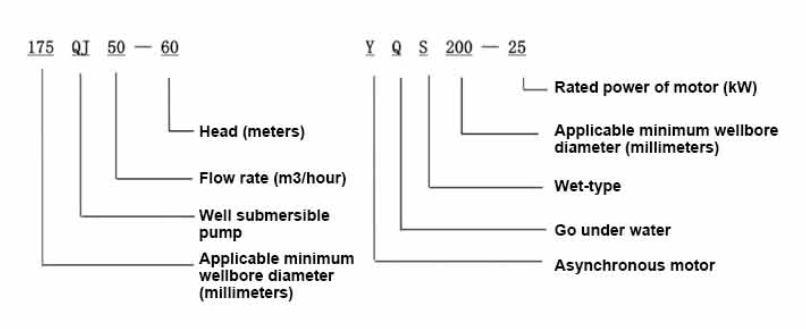12 月 . 03, 2024 15:46 Back to list
submersible axial flow pump
Submersible Axial Flow Pumps A Deep Dive into Their Functionality and Applications
Submersible axial flow pumps are specialized types of pumps that are designed to operate while submerged in fluid. These pumps have gained popularity in various sectors due to their efficiency, reliability, and versatility in handling significant volumes of water or other fluids. This article explores the fundamental workings, advantages, applications, and considerations for using submersible axial flow pumps.
Working Principle
At its core, a submersible axial flow pump employs an impeller system to move fluids. The impeller rotates within a casing submerged in the liquid, creating a low-pressure area that draws fluid into the pump. Unlike centrifugal pumps, which use radial flow to transport fluid, axial flow pumps move the liquid parallel to the impeller shaft. This design allows for higher flow rates at lower pressures, making them suitable for applications where large volumes of fluid need to be moved efficiently.
Design Features
Submersible axial flow pumps are typically composed of several key components
1. Impeller The heart of the pump, the impeller consists of blades that push water axially when rotated. The number, shape, and size of these blades can vary based on the specific application and required flow rate.
2. Motor The motor is either directly submerged or housed in a protective casing. It often requires a robust design to handle the submerged environment, ensuring longevity and performance.
3. Casing The casing encloses the impeller and motor, providing a streamlined path for fluid to flow and protecting the internal components from external damage.
4. Suction and Discharge Ports These are strategically placed to achieve optimal flow dynamics and minimize turbulence, ensuring efficient operation.
Advantages
1. High Efficiency Submersible axial flow pumps are designed for high-capacity flow. Their ability to move large volumes of fluid at relatively low head pressures makes them efficient for many industrial and municipal applications.
2. Space-Saving Design Since these pumps operate underwater, they can save a significant amount of surface space, making them ideal for urban environments and confined spaces.
4. Durability Many submersible axial flow pumps are constructed with corrosion-resistant materials, enabling them to function effectively in harsh environments, such as wastewater management and chemical processing.
submersible axial flow pump

Applications
Submersible axial flow pumps are widely used in many sectors
- Irrigation They are often deployed in agricultural settings for efficient irrigation systems, transporting water from wells or nearby sources to fields.
- Municipal Water Supply These pumps play a crucial role in water distribution systems, providing reliable water pressure and flow for residential and commercial areas.
- Wastewater Treatment In sewage treatment plants, submersible axial flow pumps are used to move large volumes of wastewater through various treatment stages.
- Flood Control During emergencies, these pumps can assist in dewatering and flood control, quickly removing excess water from affected areas.
- Cooling Systems In industrial applications, they are commonly used in cooling systems to circulate water in industrial processes or power plants.
Considerations
When selecting a submersible axial flow pump, several factors should be taken into account
- Flow Rate and Head Requirements Understand the specific needs of the application to choose a pump that can deliver the required flow rate and lift.
- Material Compatibility Ensure that the materials of the pump components are suited for the fluids they will be handling to prevent corrosion and damage.
- Power Source Consider the type of motor and its compatibility with the electrical supply, especially in remote or rugged locations.
- Maintenance Regular maintenance is crucial for optimal performance and longevity. Evaluate the ease of access for maintenance tasks.
Conclusion
Submersible axial flow pumps represent a vital technology in fluid management, effectively moving large volumes of liquid across various applications. Their high efficiency, durable construction, and space-saving design make them a go-to solution for industries ranging from agriculture to municipal water systems. As demand for effective fluid management continues, the role of submersible axial flow pumps is only expected to grow, ensuring their place in the realms of engineering and environmental management.
-
Your Guide to Deep Well Pumps
NewsOct.31,2024
-
Why Choose a Stainless Steel Deep Well Pump?
NewsOct.31,2024
-
Understanding Water-Filled Submersible Pumps
NewsOct.31,2024
-
Understanding SS Submersible Pumps
NewsOct.31,2024
-
Reliable Submersible Well Pumps for Your Water Supply Needs
NewsOct.31,2024
-
Choosing the Right Submersible Pump for Your Water Management Needs
NewsOct.31,2024
-
 Understanding Water-Filled Submersible PumpsWhen it comes to selecting the right pump for your water management needs, understanding the different types available is crucial.Detail
Understanding Water-Filled Submersible PumpsWhen it comes to selecting the right pump for your water management needs, understanding the different types available is crucial.Detail -
 Guide to Installing a Deep Well Submersible PumpWhen dealing with deep wells, a deep well submersible pump is often the most effective solution for extracting water from significant depths.Detail
Guide to Installing a Deep Well Submersible PumpWhen dealing with deep wells, a deep well submersible pump is often the most effective solution for extracting water from significant depths.Detail -
 Finding the Right Submersible PumpWhen seeking an efficient solution for pumping water from deep wells, sumps, or other applications, the submersible pump is a leading choice.Detail
Finding the Right Submersible PumpWhen seeking an efficient solution for pumping water from deep wells, sumps, or other applications, the submersible pump is a leading choice.Detail
